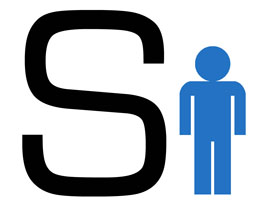Great little  for the mighty chip
for the mighty chip
Thinking at the edge: How neuromorphic computing empowers edge devices
Nov 29, 2023 |
Abhishek Jadhav
CATEGORIES
Edge Computing News |
Hardware
As experts in the industry believe that Moore’s Law and Dennard scaling is coming to an end, it becomes clear that the traditional approach to improving computer performance has reached its limits. To address these limitations, neuromorphic computing has emerged as a promising solution. Coined by Carver Mead in the late 1980s, the term “neuromorphic” refers to a computing approach inspired by the brain, combining analog and digital components.
Over recent years, the field of neuromorphic computing has expanded, particularly in its application to deep learning and machine learning. When we compare neuromorphic computers to von Neumann machines, which use separate CPUs and memory units, running programs based on explicit instructions, the difference is significant. Neuromorphic computers are inspired from neurons and synapses.
One key advantage of neuromorphic hardware lies in its integration of processing and memory, which helps mitigate the von Neumann bottleneck that can slow down the data processing speed. This integration also reduces the need for frequent data access from main memory, a common operation in conventional computing systems that consumes a substantial amount of energy.
In this article, we will explore the convergence of neuromorphic computing with edge devices and explore its potential benefits in distributed
edge computing. Additionally, we will examine industry contributions to the field of neuromorphic computing within the specific context of edge infrastructure. Finally, we will discuss the market opportunities and the future prospects of this advanced computing technology.
Neuromorphic computing meets edge devices
One of the most interesting aspects of
neuromorphic computing lies in its ability to operate with low power consumption. This capability can be attributed to two key factors – the event-driven nature of neuromorphic systems and their massive parallelism. Unlike traditional computing hardware, which continuously consumes power, neuromorphic computers only engage in computations when there are specific events or spikes to process. Its inherent parallelism allows many neurons and synapses to operate simultaneously, meaning that only a small portion of the system is active at any given time, while the rest remains idle.
Both of these factors have significant implications for the efficiency and effectiveness of computing in edge environments. The event-driven characteristic is particularly advantageous when dealing with thousands of edge devices deployed in remote settings where data is generated sporadically or in response to specific events. For instance, in scenarios such as oil and gas plants, sensors may only produce data when certain parameters exceed normal values, or surveillance cameras may transmit data upon detecting motion. Event-driven processing aligns well with the need for efficient utilization of computational resources and the minimization of power consumption, which is the case of edge computing environments.
Similarly, the concept of massive parallelism holds promise for edge computing. Many edge devices now incorporate multi-core processors or specialized AI accelerators, enabling them to engage in parallel processing of tasks. Edge computing can leverage this feature to execute resource-intensive AI computations concurrently, thereby delivering high performance and quick responses for mission-critical applications. The massive parallelism enables edge devices to reduce
latency, provide real-time feedback, and take data-driven actions to enhance operational efficiency within the ecosystem.
Industry contributes to embedded intelligence at the edge
Initially, a significant portion of research and industrial efforts in the field of neuromorphic hardware primarily focused on large-scale implementations that weren’t particularly suitable for edge platforms. However, Intel disrupted this landscape by introducing Loihi, a neuromorphic computing hardware platform based on open-source software frameworks designed for the development of intelligent computing applications.
Intel continued its development in advancing neuromorphic technology, which led to the launch of
Loihi’s second-generation, which had been developed utilizing Intel’s 4th-generation pre-production process. In this iteration, the company introduced programmable neuron models and a generalized spike messaging system, thereby opening doors to a wide array of neural network models that can be trained in deep learning.
Another embedded manufacturer in the field of commercial neuromorphic computing hardware,
BrainChip recently unveiled its second-generation Akida IP solution, built on the neuromorphic principles, with a claim of delivering low-power performance in compact edge devices. This new generation enhances energy efficiency by supporting 8-bit weights, activations, and long-range skip connections, thereby making complex neural networks feasible on edge devices.
Amid all the buzz around these developments in neuromorphic hardware, it is essential to consider their future in the context of the exponential growth of
generative AI, which heavily relies on cloud computing resources. As the industry moves toward hybrid AI solutions, the demand for more capable and efficient computing at the network edge becomes increasingly evident.
Neuromorphic computing hardware, such as Akida, get attention for their temporal event-based neural networks that support vision transformers, thus ensuring high accuracy for large language models. The future of these advanced computing technologies holds promise as they play a key role in addressing the evolving landscape of AI and edge computing.
Outlook on neuromorphic computing at the edge
In its 2023 report, Gartner
highlights four emerging technologies expected to disrupt industries over the next three to eight years, with neuromorphic computing occupying the top position. According to the market research firm, neuromorphic computing is identified as a crucial enabler that will make a significant impact on existing products and markets.
While the continuous evolution of computing hardware is a given,
experts believe that there are opportunities to achieve unprecedented levels of algorithmic performance, particularly in terms of speed and energy efficiency, through the utilization of neuromorphic computers. More specifically, graph algorithms and optimization tasks stand to benefit significantly from the extensive parallelism and event-driven operations inherent to neuromorphic computing.
It is anticipated that the growth of neuromorphic computing will play an important role in supporting the requirements of generative AI. The trajectory of neuromorphic computing’s future hinges on the maturation of the technology to meet the demands of the next generation of intelligent applications.







